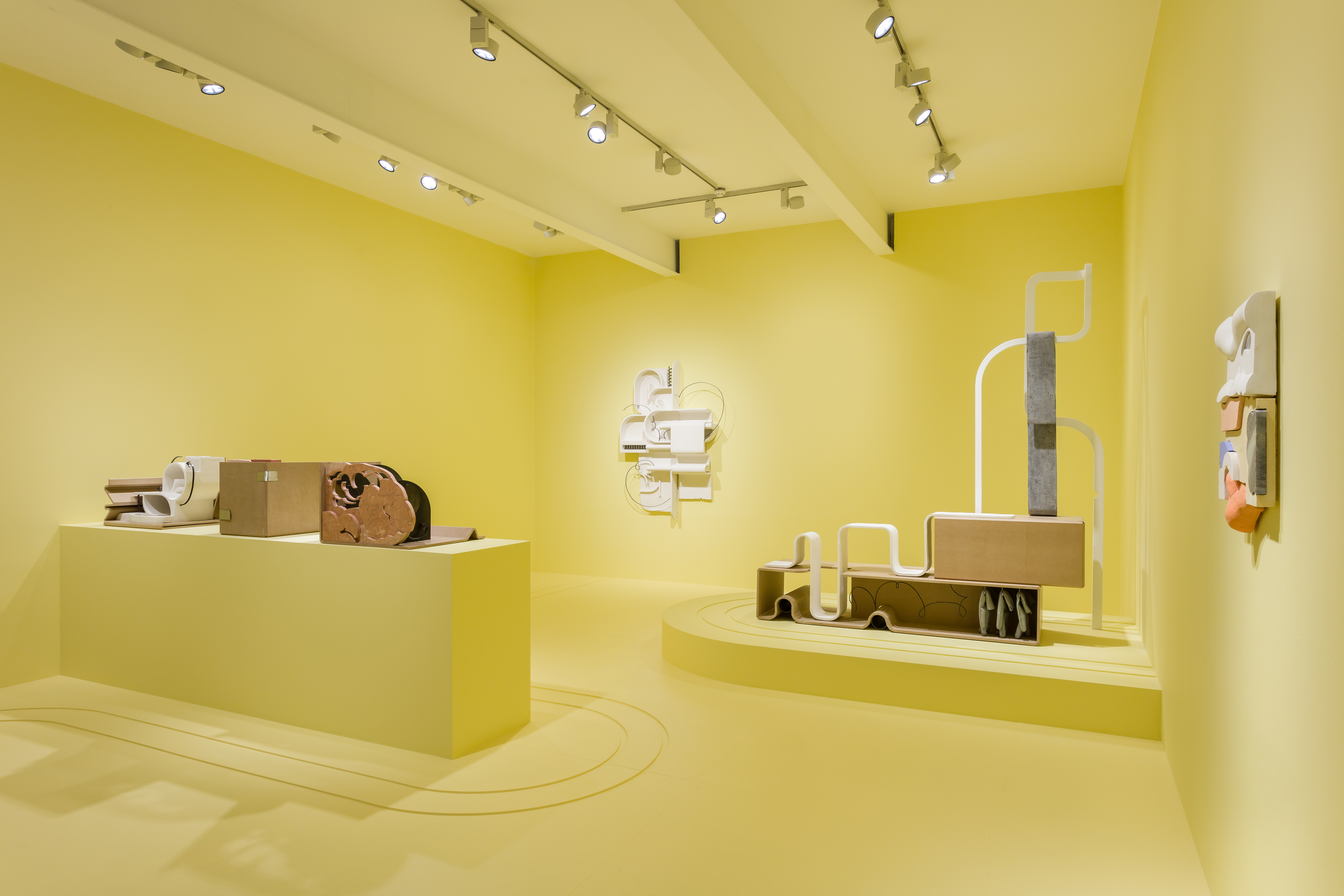


This week’s recommendation is definitely in the “last chance to see” category, given it closes tomorrow. Holly Hendry has had a succession of substantial solo shows in important venues across the UK in recent years: at The Baltic in Gateshead in 2017, the Yorkshire Sculpture Park and Liverpool Biennale in 2018 and the modernist icon that is the De La Warr Pavilion in Bexhill-on-Sea last year. All attest to the attention she has rapidly attracted from some of the most interesting curators here. She showed in the Lyon Biennial in 2019, but this is her first major gallery showing in London.
How to make sculpture in the 21st century? How should we approach the proposition of putting new objects into the world, on a planet for a century fatally compromised by the irresponsible exploitation of materials and natural resources? Self-consciously, perhaps - inevitably.
Step into the buttercup glow of Holly Hendry’s first exhibition since joining Stephen Friedman Gallery, and you enter a space that is part production-line, part stage set. The walls, the floor and the plinths are a uniform yellow, and your path is guided, subliminally, by tramlines deeply routed into the floor. From the get-go your messy, human body is subject to machine principles, and yet the title of the show itself refers to the relentless processes of the human body: all of us, no matter where in the world, converting food to fatty acids, absorbed into the blood stream and essential to our metabolism.
Hendry’s installation has subtly incorporated the gallery’s front of house staff into her work: their desk a continuation of a literal conveyor belt, they sit at their laptops, sleek operatives, eyes down, confident in the efficiency of the machine. Their role in its function obscure. The pandemic has given us all – weirdly – a different emotional relationship to cardboard boxes. So many of our basic needs have been delivered to us in the last two years in pristine brown cardboard. Neatly taped. On the conveyor, Hendry’s sculptures mimic this in raw MDF and aluminium bands – rendering, enduring the purposely ephemeral. Aping recycled paper in reprehensible, hyper-processed wood by-product, held together with resin and formaldehyde. The artist is acutely aware of the nature of the materials she uses – her MDF is repurposed, second-hand. The marble sourced from a skip. Unproductors II, 2021-22features a hand shaped in plaster, cast from the mould for a Marigold rubber glove.
Within a high production values aesthetic, the artist employs a wide range of techniques that include carving, casting and laser cutting. There is an agreeable tension between clean lines and what she refers to as the “messy, lumpy, bumpy” elements: another work in the Unproductors series comprises an open carton, this time filled with a fat, lolling tongue topped by its uvula, and animated with a sleepy “Zzzzz” inset in black metal.
Lifeline I, one of a number of wall based works in jesmonite, looks like a cartoon version of an anatomical model – ribs and spine and wriggling intestine all rendered in sugar almond colours. Overthinker, 2021-22 is one of several works here that includes a good, strong nose. A two-sided piece mounted on the wall, one side is a cool abstraction of a portrait, the other hints at internal turmoil, with spools and cogs intimating tense movement. The somehow humorous conjunction of human and machine evokes 20th century masterpieces such as Chaplin’s 1936 film Modern Times. But the moral panic that film satirises, focused on the dehumanising effect of production line work, has been overtaken and eclipsed by the increasing dominance of actual robots in all areas of contemporary manufacturing and commerce. These days we are more troubled by the growing awareness of the industrial micro-plastics we unconsciously ingest through our food.
Repetition and mechanical reproduction are invoked at every turn here: a form of ‘semantic satiation’, whereby endless recital of a word eventually renders its subject absurd or meaningless. That Marigold glove turns up again in one of the larger sculptures: a little chorus line of limp, grey forms, queued up and waiting to dance. To what end? There is a sense of absurdity here, at once of a piece with Chaplin, but perhaps more interestingly nudging towards Ray Kurzweil’s more exalted ideas about the future of humans and machines.
Caroline Douglas
Director
Stephen Friedman Gallery, 25-28 Old Burlington Street, London W1S 3AN. Open Tuesday - Saturday 11am - 5pm. Last chance to see: exhibition closes 26 February 2022. www.stephenfriedman.com